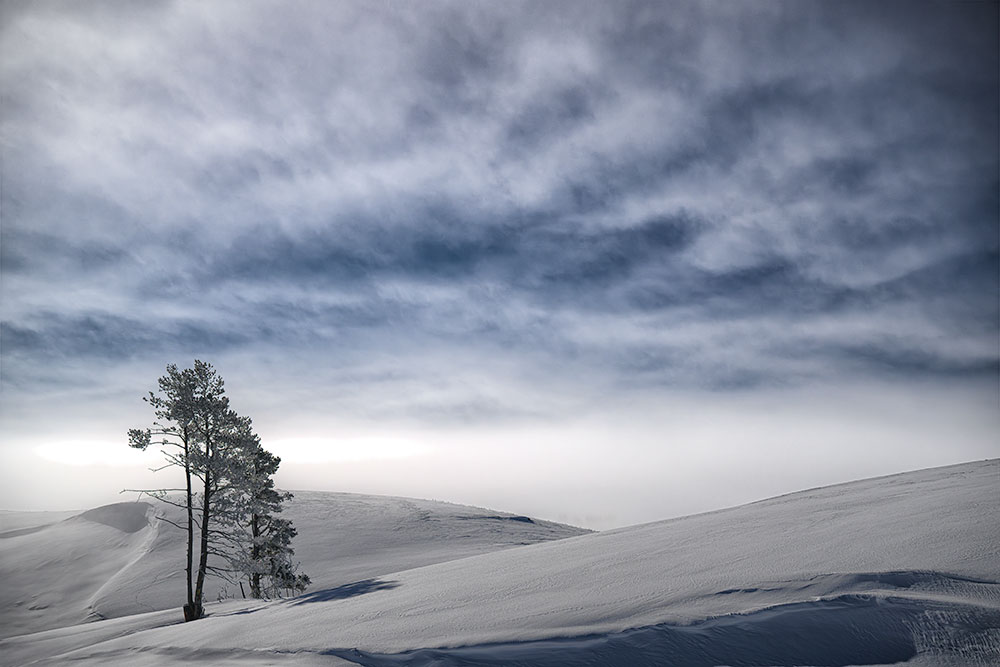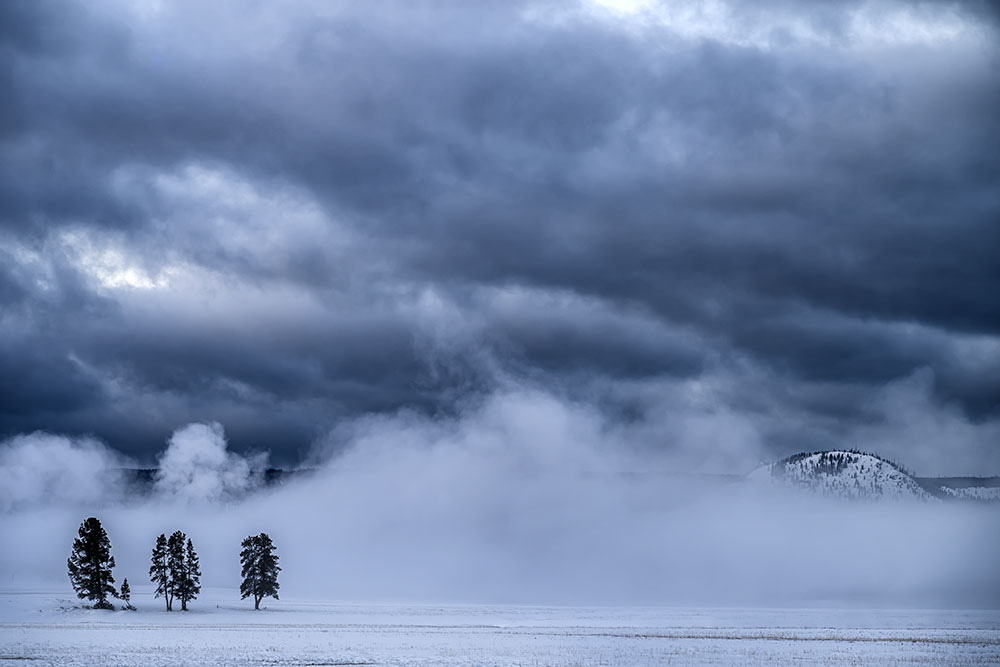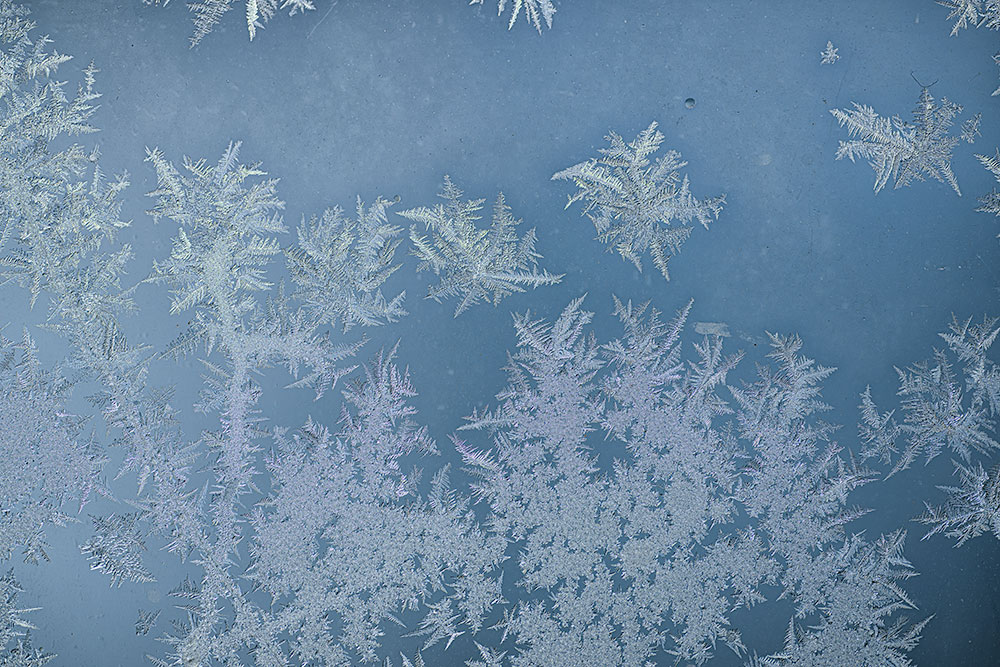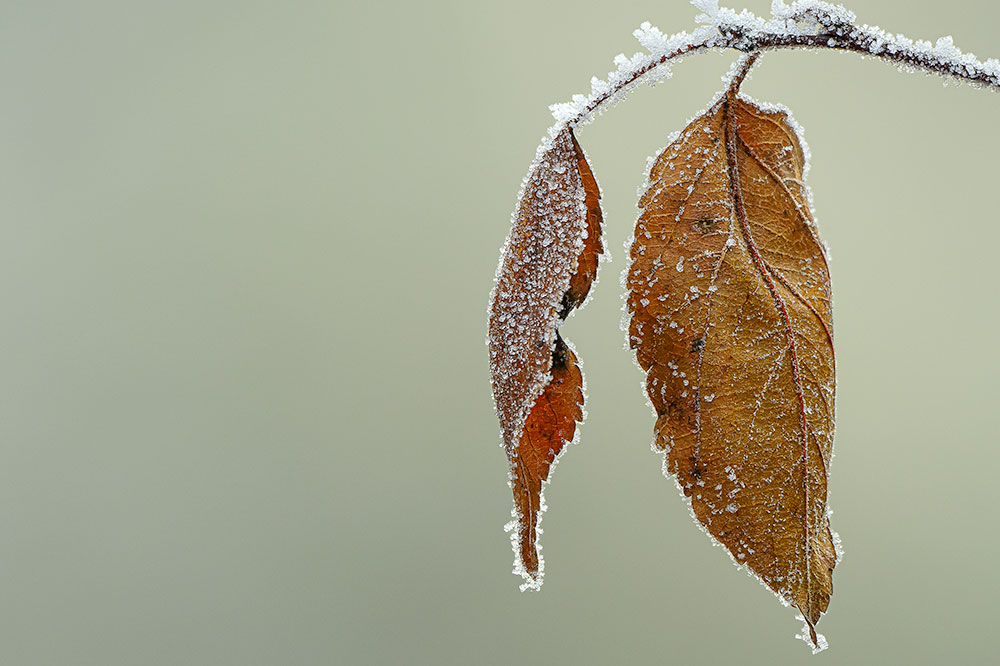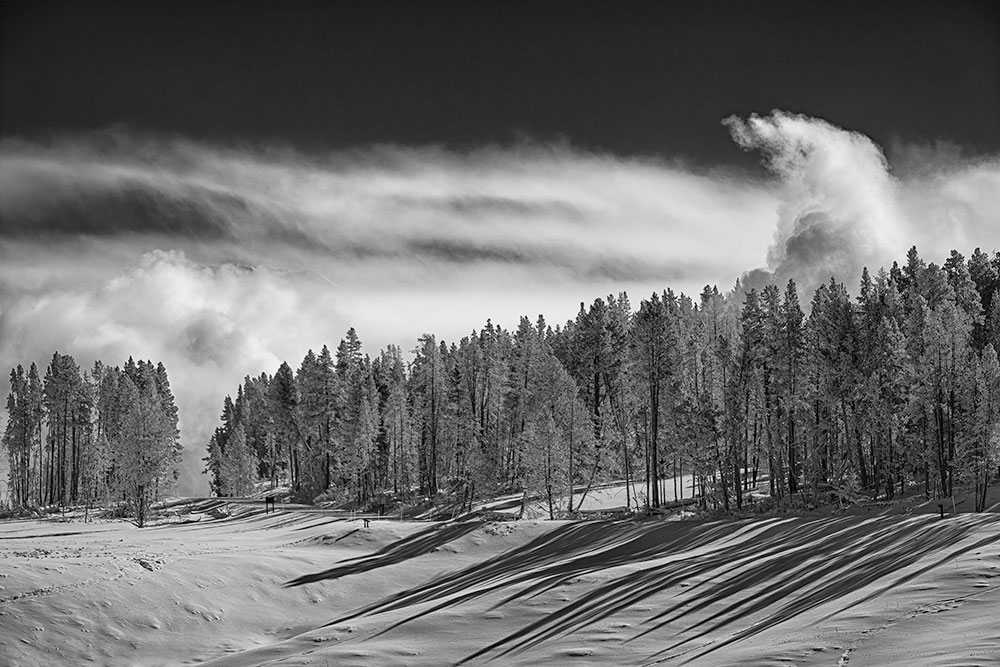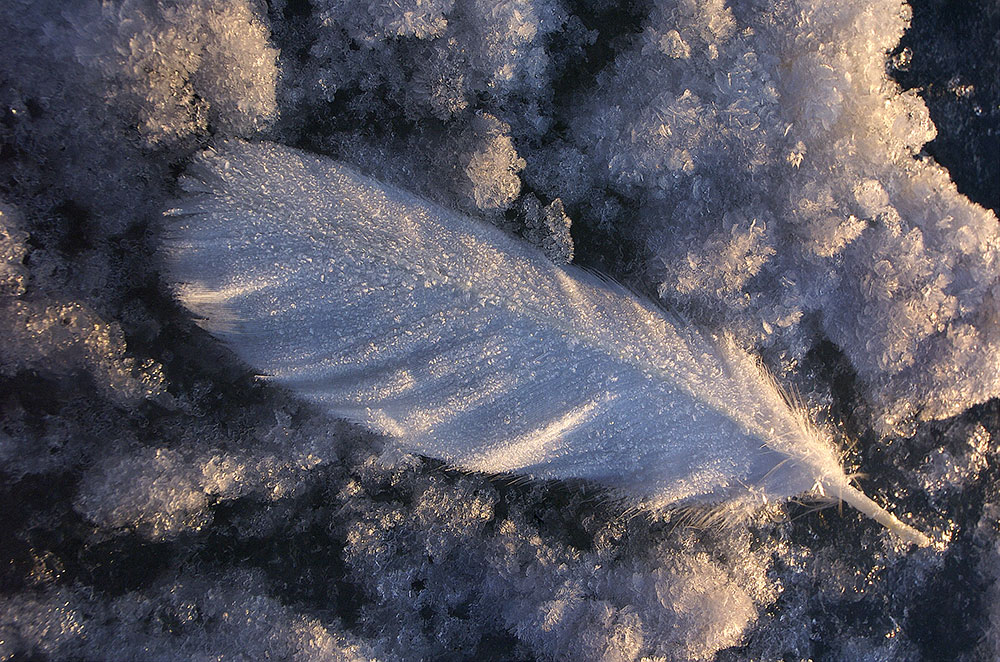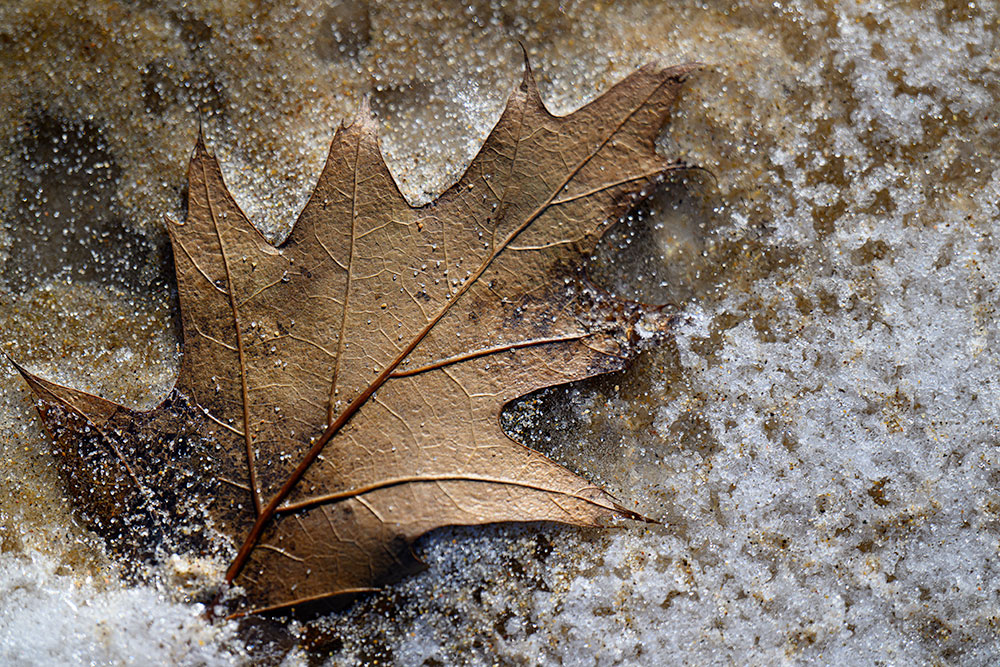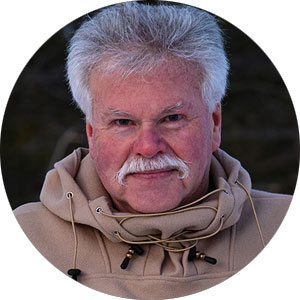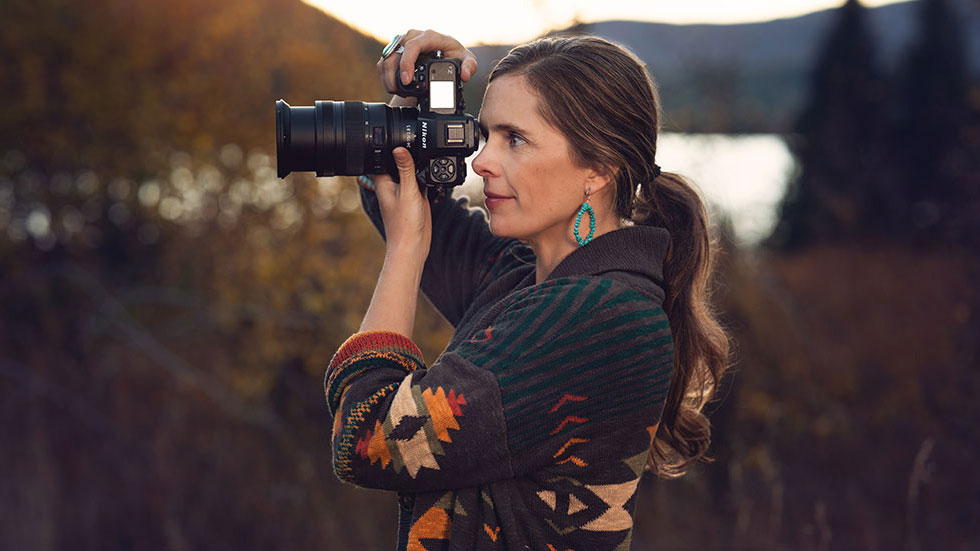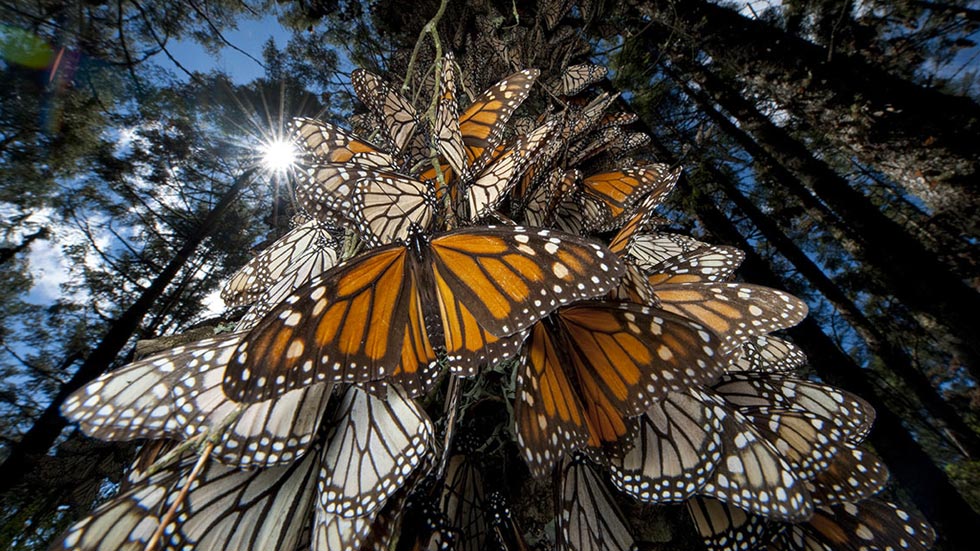Tips for Photographing Winter Landscapes
The view of the Firehole River in Yellowstone is breathtaking! Dark Tone Monochrome of the Z 8 brings the drama to the view and a warmth to the cold winter morning.
When snow blankets the landscape, we’re blessed with a fantasy world our cameras celebrate! What was old is new, what was colorless is now bursting and details overlooked present new inspiration. Subjects jump out at us from the tinniest to the grandest and all we have to do is step out the door with our camera to make magic. Our Nikon Z series mirrorless bodies are the perfect tools for this cold time to explore, engage, and capture this magical winter wonderland!
This lone pine in Hayden Valley has been a silent witness to time passage. Winter seems to rest at its foot, bracing itself against the warmth of the sun, unwilling to let go to spring.
It's your story to tell
Even those not fortunate to experience snow firsthand know it’s white and that’s where your storytelling begins. Snow is experienced on bright, sunny days and on dark, stormy days, and all moments in between. When you arrange the elements in the viewfinder, do you want that snow to be white, blue, or gray? Based on the story you’re telling, your Nikon cameras make it a snap to express yourself. You might want to overexpose the scene to create that bright, sunny day look. You may want to expose as the camera suggests, bringing out the blue in the snow, which says cold. Or you might underexpose to emphasize the stormy conditions.
Standing guard over the meadow, the three majestic pines pop in and out of the fog. This monochromatic scene while captured in color brings the chill to life and set the stage for the winter wonderland.
The key is remembering that the world knows snow is white. You don’t have to have crystal by crystal detail in your photograph—and this gives you the latitude to show detail in specific subjects or not. This knowledge gives you the creative freedom to work your magic. Let’s say it’s a cold morning, perhaps below zero when you peer out the window. You notice the ice crystals that have formed on the glass. The first thing is to take great care not to breathe on the glass, as that might make the crystals disappear. The pattern is gorgeous but as you move about, different colors in the background appear. With a macro lens, like the NIKKOR Z MC 105mm f/2.8 VR S, giving you a narrower angle of view, you move around to take in the shadow of a nearby tree. Set your White balance to AWB A1, exposing normally, the “cooler” color in the background cements the feeling that it’s cold outside. The detail in the ice crystals scream awe!
The negative night temps created their own art on the windows. As the hint of the day began in the east, their pattern lit up in the most delightful way.
We want to tap into the viewers’ preconceived notions of cold, winter, snow, and use that to transport them into the world we’re exploring through our cameras. This means a wide breadth to our kit provides the greatest latitude for image captures. I like to venture out with one camera body—either the Z8 or Z6III with the NIKKOR Z 24-70mm f/2.8 S II attached. The lens’ zoom range and close focus capability is such a fun starting point. In my bag are a couple of additional lenses: the NIKKOR Z 14-24mm f/2.8 S, the 105mm macro, and the NIKKOR Z 180-600mm f/5.6-6.3 VR super telephoto. In selecting the right lens, there’s an additional thought along with bringing back “the” photograph, and that’s no footsteps! Prior to walking into a scene, thinking twice about footsteps you might be leaving in your potential photograph is a smart strategy. Oftentimes the right lens not only captures the scene you want, but also does the walking for you.
Do you need to concern yourself about your gear being able to handle the cold? I’ve taken my cameras to -42 with operation as normal as if I was shooting at 60 degrees.* You cannot breathe on the EVF/LCD though, as they will fog up. And in the cold, noses typically start running and, well, you get the idea. You might want to take advantage of the Touch Controls that Nikon Z series cameras offer. It can be found in the SetUp Menu > Touch Controls > Glove Mode. Turn it on so you can work easier with gloves on ‘cause you’ll surely be wearing them!
Ever been in a snowball fight? First, don’t do that with a camera in your hand. Second, remember how much fun that experience was, both the throwing and being hit? How can you bring that energy into your photography? Winter is an excellent time to expand your storytelling by going from warm to cold tones. Your Nikon camera makes this truly a snap. Program your i button so you can quickly access White Balance and like a snowball fight, play! See for yourself when you warm up a scene by using Cloudy (6000k) or Shade (8000k). Conversely, you can manually dial in 4000k/5000k and see how the blue makes you shiver, both from the image and that snowball that went down your neck. Brrrrrrr.
Keep in mind that some of the worst weather can make for some of the best photographs!
The Key to Winter Shooting
You gotta take care of yourself! Wearing layers is a sound approach from head to toe. A simple beanie on the noggin is essential. Wrap up your torso in a thermal shirt, vest, and jacket, which traps in warm air that protects your core. The outer layer being wind and rain resistant is a huge plus in staying warm. Fleece-lined pants and/or long underwear are great for your legs. Today there are some amazing footwear options for snow that you should customize to your locale. Probably most importantly are the gloves you select! You might want to have a couple of different types of gloves that will keep you warm in chilly to blizzard conditions. A good strategy is taking your camera to an outdoor shop and trying on gloves to see how they work for you and the controls of the camera.
It's winter and snow is made from water but it’s incredibly dry out. Staying hydrated is often overlooked and that will cause you at the very least to become colder, easier even with all those layers. Calories burning inside you is also how to stay warm. When you’re comfortable shooting, you will see it in your photographs as your mind freely gets lost in the wonderland. Your camera will do the rest to bring back those memories.
As if trying to peak over the pines to photo bomb the scene and check out the shadows, the steam from a geyser sets the stage. The calm and drama is brought simply by the Z 8’s Dark Tone Monochrome.
Winter is all about wonder!
Keep in mind that some of the worst weather can make for some of the best photographs! And winter is a time for some extreme weather. You might approach shooting in winter with the white as the thread that you use to weave your story. It might start at your feet as you see elements of spring or fall frozen in winter’s crust. Making the subject pop when shooting down on it can be greatly enhanced by the light. The sun is naturally low to the horizon in winter, so take advantage of that. The gull feather in the ice (below) is an example of this with the strong side lighting, which creates shadows that in turn creates texture. The last leaf of fall trapped for the winter (below) is another example. We have different light here, an overcast sky, which is common in winter. That soft light softens the shadows, so the shape of the leaf is pronounced because of the narrow DoF more than light contrast. Let your imagination warm up the scene, and the magic comes through.
The only sign of life left after the feast is the single feather. The night before the Glaucous Gull had been feeding of the leftovers from a Polar Bear on the edge of the Beaufort Sea. In the chaos of the moment, the feather was left behind in the ice.
The night before the wind had been blowing a gale on Lake Michigan. The last leaves of fall couldn’t withstand the treatment, finally letting go of their branch becoming locked in the snow and ice along the shore.
Those grand sweeping winter landscapes are what really get me out time and time again in the cold of winter. More often, the colder the better, as the atmosphere comes to life! This is when you want to use a lens like the NIKKOR Z 70-200mm f/2.8 VR S or NIKKOR Z 180-600mm f/5.6-6.3 VR, shot wide open. While snow does blanket the landscape, it also wraps it all in a fine, white line, detailing the tinniest element. That longer focal length wide open captures both the vastness and detail, putting the viewer standing in the snow right next to you. When they enjoy your photograph and you see them shiver, you know that you brought back that cold to the warmth of their heart.
*This article describes the experience Moose Peterson has had while using his cameras. Nikon cameras have a recommended operating temperature range listed in the manual. Please refer to this documentation for your model for specific details.

